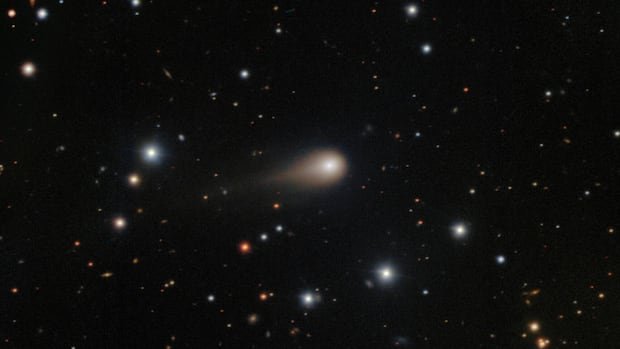On July 1, the ATLAS system, designed to detect potential asteroid impacts, initially identified an object believed to be an asteroid. However, further analysis revealed that this object originated from outside our solar system, marking only the third interstellar object ever observed.
Since its identification, astronomers have been diligently collecting data on the newly found interstellar object known as 3I/ATLAS. Despite challenges posed by the object’s hazy gas cloud, referred to as a coma, obscuring its nucleus, researchers have managed to gather intriguing information.
Key findings and remaining questions surrounding 3I/ATLAS are as follows:
**Interstellar Identification**: 3I/ATLAS was determined to be a celestial body ejected from another star system during the planet formation phase, making it unmistakably interstellar. Moving at an exceptionally high speed exceeding the solar system’s escape velocity, it represents the fastest observed object passing through our cosmic neighborhood.
**Cometary Nature**: Initial assumptions of 3I/ATLAS being an asteroid were dispelled as it was revealed to be a comet. Comets, distinct from asteroids, consist of frozen gases, rocks, and dust. When approaching the sun, the heat causes the frozen gases to sublimate, forming a coma and a tail typical of comets.
**Gas Composition**: Observations by the James Webb Space Telescope and SphereX identified an unusual abundance of carbon dioxide in 3I/ATLAS compared to known solar system comets. The object also contains carbon monoxide and water ice, common cometary components.
**Polarization Anomaly**: An intriguing distinction noted by astronomers is the unique polarization of light emitted by 3I/ATLAS. Unlike typical comets, the light from this interstellar visitor exhibits a unidirectional pattern, hinting at distinctive particle characteristics.
**Frequency of Interstellar Visitors**: With only three confirmed interstellar objects detected so far, including 3I/ATLAS, calculations suggest a significant number of such visitors could traverse our solar system. The Vera C. Rubin telescope in Chile is expected to enhance detection capabilities, potentially revealing more interstellar interlopers in the future.
**Future Observations**: While 3I/ATLAS will soon disappear from view due to its orbit around the sun, astronomers anticipate its reappearance by December. Continued observations will offer insights into its journey as it exits the solar system, provided it survives its solar encounter.
As researchers await further data on 3I/ATLAS, the object’s passage close to Mars presents a unique opportunity for enhanced resolution imaging, surpassing capabilities even of the Hubble Space Telescope. This upcoming event promises to unveil additional details about this fascinating interstellar comet.
